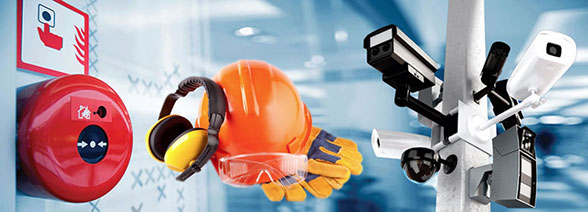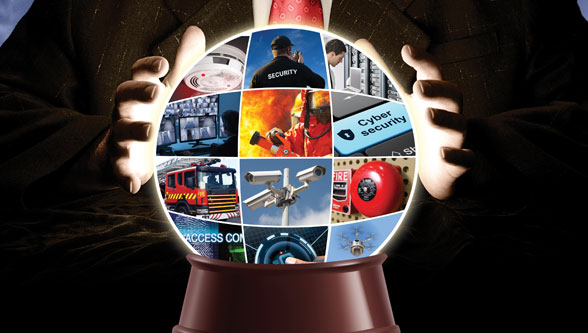Until recently, fire and safety was something that was placed on the back-burner for many organizations. Most of the time was spent on mitigating risks after an accident had occurred rather than detecting or preventing them. In the past decade, however, there has been a huge shift towards how safety is viewed within enterprises. Many enterprises today are adopting a prevention-based approach and laying emphasis on identifying and addressing issues before someone gets hurt.
In fact, fire and safety preparedness of a company is now being related to its brand image. Further, business continuity and an always-on environment are a requirement for today’s businesses. As fire and safety incidents are major business disruptors, companies are taking proactive approach towards addressing safety issues. Being complaint to international standards is another reason that is driving this change in approach towards security.
More and more companies are focusing on employee training and education by organizing fire and safety workshops for employees, including contractual workers. Apart from fire and safety, organizations are also putting immense thrust on physical plant and facility security. They are actively evaluating advanced products and technologies to meet their safety criteria and objectives.
India’s economic growth, rapid industrialization, as well as growing commercial sector and real estate industry is further fuelling the demand for fire and safety equipment. According to the findings of TechSci Research, the country’s fire & safety equipment market has a strong growth potential and market revenues are expected to reach to about $4.94 billion by 2019.
To keep pace with the growing demand, the fire, safety and security industry is evolving rapidly and offering innovative products. Industrial Safety Review analyses the key trends and innovations emerging in the fire, safety and security segment and the future growth prospects.
Sophisticated fire detection systems on the rise
Fire poses a significant risk in the workplace. Especially, when we consider work environments, such as construction sites, chemical laboratories and factories, the potential fire safety hazards are many. If we look at the statistics an average of 59 Indians are killed every day due to fire. In fact, fire accidents take away more lives than any natural calamity or disasters.
Given these alarming statistics, workplaces have increased their thrust on fire preparedness and are considering advanced fire detection and alarm systems. Fire equipment with ease of use features are also being demanded by organizations.
Advanced fire alarms today are equipped with individual smoke detector sensitivity adjustment and drift compensation. Fire alarms with maintenance-needed indication feature are also gaining popularity. Many products coming to the market today are equipped with multiple abilities. They just don’t detect smoke, but also have the ability to detect heat, carbon monoxide and infrared light from flames as well. These features help reduce the possibility of nuisance alarms as more than one criteria needs to be fulfilled to trigger an alarm and shorten the time required to detect the actual fire.
Wireless technology is transforming every industry and fire safety industry is no different. Wireless smoke detector systems are rapidly gaining popularity. Another technology that is seeing a surge in demand is voice annunciation as it allows danger to be announced with a pre-recorded message. Voice alert systems are set to become more popular as people have an increased reaction to voice instructions as compared to simple sirens.
With integrated building systems gaining momentum in residential and commercial complexes alike, the industry is looking at defining the rules as to how fire alarms and detection components will work when they are integrated with other building systems. For instance, if there is heavy traffic on the LAN, the system should be able to identify and give priority to fire alarm signals.
Also, the role of fire alarms and detection components is set to expand as they become integrated with other building systems. For instance, sensors used for controlling lighting in a room can be used in cases of fire to see if a room is occupied or not. Firefighters can then use this information to rescue in a speedy manner by eliminating unoccupied room.
Latest technology trends transforming workplace safety
Workplace safety is witnessing a huge shift with the wide-spread use of mobile phones and smart technology. As majority of workers carry their mobile phones to work today, organizations are focusing on utilizing mobile phones to oversee the safety of the employees.
Another interesting trend to watch out in the safety space is smart technology making its way into PPE. For years, PPE has consisted of overalls, gloves, masks, harnesses, etc., on which workers rely to ensure safety. Smart technology integrated into PPE has the potential to take workplace safety to another level. Utilizing in-built sensors, PPE equipment can monitor an employee’s vital data, including blood pressure, heart rate, blood oxygen levels and so on. This data can then be used to determine an employee’s alertness and can prove instrumental in preventing workplace accidents.
Big data analytics is a major trend that is streamlining every industry and safety industry is no different. Compiling and analysing safety, accident and incident reports and information about machines and equipment involved can help companies identify red flag issues. Analyzing this historical data gives companies a fair idea about where danger lurks in an organization and take steps to prevent future incidents.
Technology revolution is also impacting the traditional signage. Today, there is digital ‘smart’ signage that can change with changing conditions, and provide more eye-catching alerts for employees.
In the future, augmented reality will also be used to enhance workplace safety. For instance, wearable goggles may be embedded with AR technology. This will help to give employees live feedback, such as temperature readings, as well as instructions with best practices.

AI, deep learning revolutionizing security surveillance
Since the past few years, businesses have been putting cybersecurity at the forefront. And rightly so, as the consequence of any attack on an organization is devastating. However, organizations are now realizing that physical security cannot be ignored, in fact, one cannot be achieved without the other. Video surveillance, which is often considered as the first step to physical security, is witnessing some interesting technological transformation. AI, deep learning and smart face recognition are revolutionizing video surveillance.
As AI continues to become more common and powerful, it has changed the picture completely through real-time monitoring of the video footage. It provides intelligent analysis on how security incidents can possibly take place and how can they be prevented. We have several AI solutions in the market today that can detect unattended objects like bags in airports and public spaces, enabling security agencies to take prompt action. Likewise, AI-enabled surveillance solutions can monitor people moving around in retail stores and identify who might engage in theft. AI promises that no detail, no information, and certainly no threat goes undetected on account of human error. Currently, AI is mostly used for video analytics, but the technology will be an important component in many different applications and products in the future.
Mobility and Cloud are the other two technology trends that becoming popular. More and more enterprise applications are moving to the cloud eliminating customer-premise hardware, servers and software.
Video analytics is also in vogue as extracting information from captured video can help uncover unique insights and patterns. Cameras with embedded video analytics will also see surge in demand as data no longer needs to be transmitted to a central server. These cameras can detect motion, face and object and analyze image data at the point of capture, enabling efficient use of both transmission and recording bandwidth. Additionally, data can be anonymised and encrypted before it is transferred, addressing security and privacy concerns. Using analytics, cameras can also be set to record video at a lower resolution and then increase resolution to capture higher-quality video when triggered by an event.
Video analytics can also help organizations achieve their sustainability goals as it can serve as an operational planning tool, enabling organisations to improve energy efficiency within offices. Smart sensors can be used to deliver environmental benefits, such as monitoring air quality for remedial action. Similarly, thermal imaging can be used identify areas of energy waste. As research continues to intensify, we will continue to see several application areas of these technologies coming to the fore.
Fire, safe and security is definitely buzzing with innovation riding on the back of latest technologies and growing demand. The outlook for the industry remains extremely positive as enterprises continue to realize that fire and safety is an investment rather than cost.

